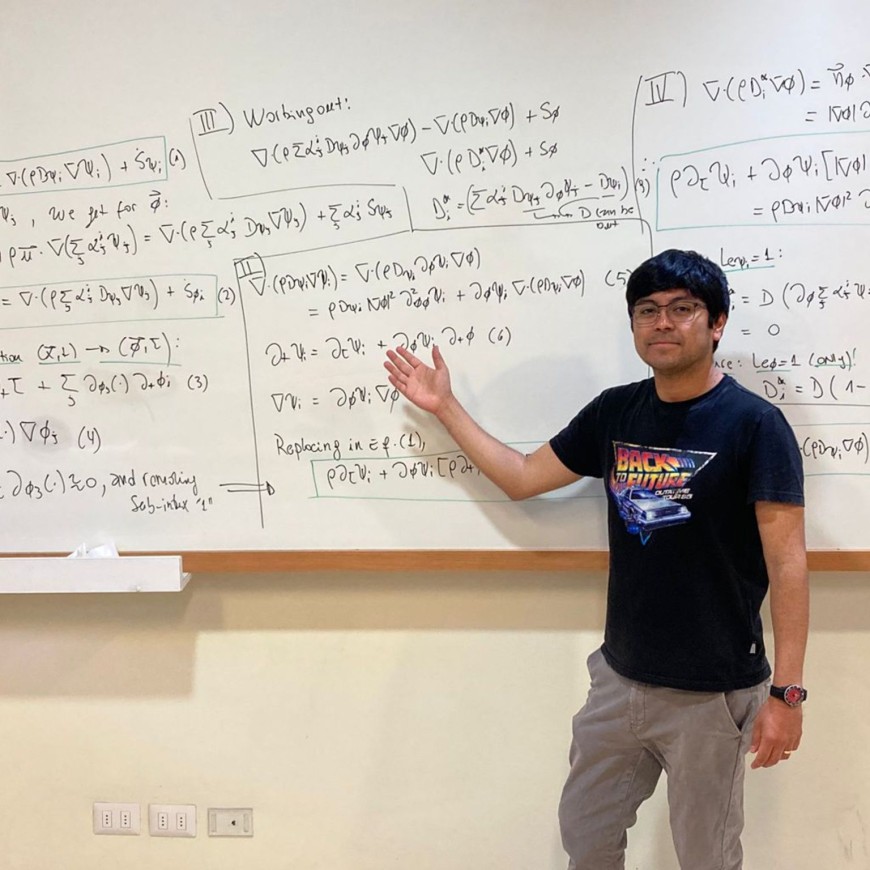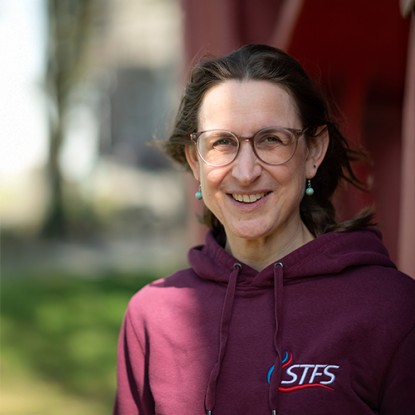Flamelet Equations Reloaded – what's new?
New Publication
13.01.2025
Flamelet Equations Reloaded – what's new? The short answer: We aimed to bring deeper physical insights into flamelets without getting lost in overly complex mathematical formulations—though, admittedly, tackling those can be fun too!

Flamelet Equations Reloaded – what's new?
The short answer: We aimed to bring deeper physical insights into flamelets without getting lost in overly complex mathematical formulations—though, admittedly, tackling those can be fun too!
(Before you read on – look at Hernán's fantastic T-shirt in the picture)
To me, it sometimes seemed that it was becoming increasingly difficult for non-experts to see the physics behind the mathematics. So, it was time to take a fresh approach to the problem.
Advantages of the Adoption of a Generalized Flame Displacement Velocity as a Central Element of Flamelet Theory
Hernán Olguín Astudillo, Pascale Domingo, Luc Vervisch, Christian Hasse, Arne Scholtissek
What happend – a short recap of the last decade
Over the last few decades, numerous extensions of the original set of flamelet equations formulated by Norbert Peters have been proposed in the literature. These extensions address non-premixed, premixed, spray, and partially premixed flames, incorporating phenomena such as differential diffusion, curvature, evaporation, and even interactions between different combustion regimes.
However, despite these significant advancements, extensions based on the classical flamelet-transformation framework often result in lengthy derivations and overly complex final equations. This complexity poses challenges for both interpretability and practical application.
To address these issues, we have spent the last several years developing an alternative paradigm for flamelet theory. This new approach is based on a Lagrangian interpretation of the flamelet transformation.
In our most recent work, we demonstrate how adopting a generalized flame displacement velocity vector (associated with the simultaneous dynamics of two scalar isosurfaces) offers several key advantages:
- Simpler Derivations: It provides a streamlined and direct procedure for deriving general 2D flamelet equations, significantly reducing complexity compared to existing methods.
- Compact Equations: The resulting 2D flamelet equations for conditioning scalar gradients (scalar dissipation rates) are exceptionally concise. They integrate multiple effects into a few terms directly linked to the projections of the generalized velocity vector.
- Flexible Coordinate Systems: This framework enables the characterization of different composition space coordinate systems through the same generalized flame displacement velocity. This opens the door to defining new, previously unexplored flamelet coordinates.
The outcome is a framework that is both compact and user-friendly, offering significant potential to advance flamelet theory and its applications. We believe this represents an important step forward in the field.

